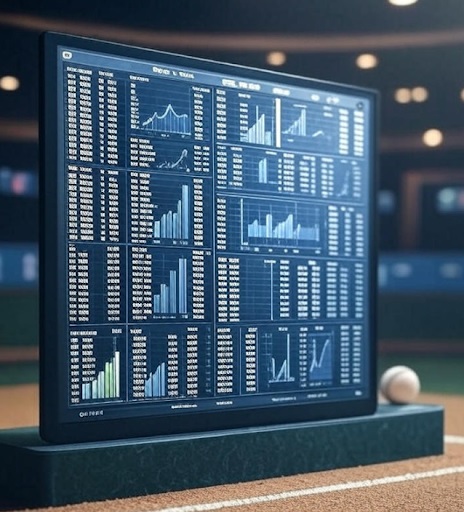Surface conditions fundamentally determine cricket match outcomes through their influence on batting performance, bowling effectiveness, and overall scoring patterns. Understanding pitch characteristics enables sophisticated betting analysis that goes beyond basic team statistics to identify value opportunities based on playing surface advantages. Professional cricket betting odds reflect surface conditions, but sharp bettors can exploit inefficiencies when markets fail to properly price environmental factors.
Cricket surfaces vary dramatically across global venues, creating distinct advantages for specific playing styles and team compositions. Australian pitches favor pace and bounce, subcontinental tracks assist spin bowling, while English conditions promote swing and seam movement. These regional variations create predictable patterns that informed bettors can leverage for consistent profitability.
Modern cricket analysis requires comprehensive surface evaluation that incorporates pitch preparation methods, weather influences, and historical performance data. Successful bettors develop systematic approaches to surface analysis that identify when teams and players perform above or below their statistical norms based on playing conditions.
Understanding Different Cricket Surface Types
Cricket pitches fall into distinct categories that create predictable playing characteristics and betting opportunities. Green pitches contain grass coverage that assists seam and swing bowlers through enhanced ball movement and unpredictable bounce. These surfaces typically favor bowling teams with strong pace attacks while challenging batsmen with lateral movement.
Flat or dead pitches offer minimal assistance to bowlers through hard, even surfaces that create predictable ball behavior. Batsmen thrive on these conditions because consistent bounce allows confident shot-making and aggressive scoring. Modern limited-overs cricket often features flat pitches designed to maximize entertainment value through high-scoring contests.
Dusty pitches develop as matches progress, particularly in hot, dry climates where surface moisture evaporates rapidly. These conditions increasingly favor spin bowlers as rough patches and cracks provide purchase for turning deliveries. Understanding pitch deterioration patterns helps bettors identify when spin-heavy teams gain advantages during longer matches.
Cricket Surface Classification and Characteristics:
| Surface Type | Key Features | Favored Style | Typical Scores | Betting Implications |
| Green/Grassy | Grass coverage, seam movement | Pace bowling | Low-medium | Back pace attacks |
| Flat/Dead | Hard, even surface | Batting | High | Favor strong batting lineups |
| Dusty/Dry | Rough, turning surface | Spin bowling | Variable | Support spin-heavy teams |
| Damp/Wet | Moisture content | Swing bowling | Low | Early bowling advantage |
| Bouncy | Hard with steep bounce | Pace and batting | Medium-high | Suit tall fast bowlers |
| Slow/Low | Soft with minimal bounce | Spin and patience | Low-medium | Favor experienced players |
Bouncy pitches generate steep, consistent bounce that benefits both fast bowlers and skilled batsmen. These surfaces reward accurate bowling while allowing confident stroke-play for batsmen who adapt to the increased pace. Australian venues typically produce bouncy conditions that favor aggressive playing styles.
Weather Impact on Surface Behavior
Weather conditions dramatically influence pitch behavior and create dynamic betting opportunities throughout match days. Overcast skies provide atmospheric conditions that enhance swing bowling through increased humidity and air pressure changes. These conditions often transform seemingly batting-friendly pitches into bowling paradises.
Rain affects pitch behavior through moisture content changes that alter ball grip and bounce characteristics. Damp conditions initially assist seam and swing bowlers before potentially creating unpredictable ball behavior as surfaces dry unevenly. Understanding weather forecasts becomes crucial for accurate betting analysis.
Temperature variations affect pitch hardness and deterioration rates throughout matches. Hot conditions accelerate surface drying and crack formation that increasingly favors spin bowling. Conversely, cooler temperatures maintain surface integrity and consistent playing characteristics for longer periods.
According to data from the International Cricket Council, weather-related surface changes account for significant scoring variations that create betting value when markets fail to adjust for evolving conditions.
Player Style Analysis and Surface Suitability
Individual player success correlates strongly with surface conditions that match their technical strengths and playing styles. Aggressive stroke-makers thrive on flat pitches where predictable bounce allows confident shot-making, while patient accumulator-style batsmen excel in challenging conditions requiring defensive techniques.
Fast bowlers achieve optimal performance on pitches offering pace, bounce, and seam movement. Green surfaces enhance their natural weapons while flat pitches diminish their effectiveness significantly. Understanding these relationships helps identify when pace bowling attacks provide betting value based on surface conditions.
Spin bowlers require turning surfaces that provide grip and bounce variation for effective wicket-taking. Dusty, worn pitches offer ideal conditions for spinning deliveries while green surfaces typically nullify their advantages. Evaluating spin bowling matchups requires careful surface analysis.
Technical batting styles show clear correlations with surface performance patterns. Players with strong defensive techniques often outperform on challenging surfaces where patience and shot selection become paramount. Conversely, aggressive players may struggle when surfaces restrict scoring opportunities.
| Player Type | Ideal Surfaces | Challenging Surfaces | Key Indicators | Betting Application |
| Aggressive Batsmen | Flat, bouncy | Green, dusty | Strike rate trends | Target high-scoring games |
| Patient Batsmen | Green, slow | Flat (time pressure) | Average consistency | Value in tough conditions |
| Pace Bowlers | Green, bouncy | Flat, dusty | Wicket-taking rates | Surface-specific performance |
| Spin Bowlers | Dusty, turning | Green, flat | Economy rates | Match progression analysis |
| All-rounders | Variable | Extreme conditions | Balanced contributions | Versatility premium |
Regional Specialization and Travel Factors
Cricket players develop specialized skills based on their domestic playing conditions, creating performance variations when competing in foreign environments. Subcontinental players typically excel at playing spin bowling due to extensive exposure to turning pitches, while they may struggle against pace and bounce in Australia or South Africa.
English and South African players often possess superior techniques for handling seam and swing bowling due to local conditions that emphasize these skills. However, they frequently struggle on subcontinental turning pitches where spin bowling dominates. These regional specializations create betting opportunities when teams travel.
The betongame bd platform tracks regional performance variations that reveal when traveling teams face significant disadvantages based on unfamiliar playing conditions. Home advantage extends beyond crowd support to encompass surface familiarity and technical preparation.
Adaptation periods affect player performance during tours as they adjust to foreign conditions. Early tour matches often favor home teams while visiting players acclimate to surface differences. Understanding adaptation timelines helps identify betting value during series progression.
Team Composition Analysis for Different Surfaces
Team selection strategies should reflect surface conditions through balanced bowling attacks and batting orders suited to expected playing characteristics. Teams with versatile bowling options maintain competitiveness across various surface types while specialized units excel in specific conditions.
Pace-heavy bowling attacks dominate on green, bouncy surfaces where seam movement and aggressive lines prove effective. These teams struggle on flat pitches where their primary weapons become neutralized. Evaluating team composition relative to surface conditions identifies significant betting edges.
Spin-reliant teams gain substantial advantages on turning pitches where their specialist bowlers can exploit favorable conditions. However, these same teams often struggle on pace-friendly surfaces where their bowling lacks penetration. Understanding team bowling balance becomes crucial for surface-based betting analysis.
Batting depth requirements vary significantly based on surface conditions. Challenging bowling surfaces demand deeper batting lineups capable of handling difficult periods, while flat pitches reward top-heavy batting orders designed for aggressive run accumulation.
Team Composition Optimization by Surface Type:
- Green/Seaming Surfaces: Pace-heavy attacks, defensive batting orders, experienced players
- Flat/Batting Surfaces: Balanced bowling, aggressive batting, big-hitting specialists
- Turning/Spin Surfaces: Multiple spinners, spin-playing specialists, patient batting
- Bouncy Surfaces: Tall pace bowlers, stroke-playing batsmen, athletic fielders
- Variable Surfaces: Balanced attacks, adaptable players, tactical flexibility
Historical Performance Patterns
Long-term venue statistics reveal consistent surface characteristics that influence team and player performance patterns. Some grounds consistently produce high-scoring matches while others favor bowling throughout their history. Understanding these venue tendencies provides foundational knowledge for betting analysis.
Head-to-head records at specific venues often reflect surface advantages that transcend current form or rankings. Teams with superior records at particular grounds may possess tactical advantages or personnel suited to local conditions. These historical patterns create valuable betting insights.
Seasonal variations affect surface preparation and behavior at many venues. Monsoon seasons, winter conditions, and summer heat influence pitch characteristics in predictable ways. Tracking seasonal performance patterns helps identify optimal betting opportunities throughout cricket calendars.
Advanced Surface Analysis Techniques
Modern surface analysis incorporates multiple data sources including groundsman interviews, pitch preparation reports, and historical weather patterns. Professional betting analysis combines these qualitative factors with quantitative performance metrics to create comprehensive surface assessments.
Pitch deterioration modeling predicts how surfaces change throughout multi-day matches based on weather, usage, and preparation methods. Understanding deterioration patterns helps identify betting value in markets that focus on later match stages or individual session outcomes.
Real-time surface monitoring during matches provides dynamic betting opportunities as conditions evolve. Live betting markets often lag behind actual surface changes, creating value for bettors who accurately assess evolving playing conditions.
Technology integration includes pitch moisture readings, hardness measurements, and grass coverage analysis that provide objective surface data. Combining technical measurements with observational analysis creates superior surface evaluation frameworks.
Surface analysis represents a fundamental component of successful cricket betting that requires systematic evaluation of pitch conditions, weather factors, and player suitability. Understanding how different surface types influence match outcomes enables identification of betting value when markets misprice environmental advantages. Professional bettors develop comprehensive surface analysis frameworks that incorporate team composition, player styles, and historical performance patterns to gain consistent edges in cricket betting markets.
The evolution of cricket toward more batting-friendly surfaces in limited-overs formats contrasts with traditional Test cricket’s emphasis on balanced conditions. Successful bettors adapt their analysis techniques to account for format-specific surface preparation while maintaining focus on fundamental principles that govern player and team performance across different playing environments.



